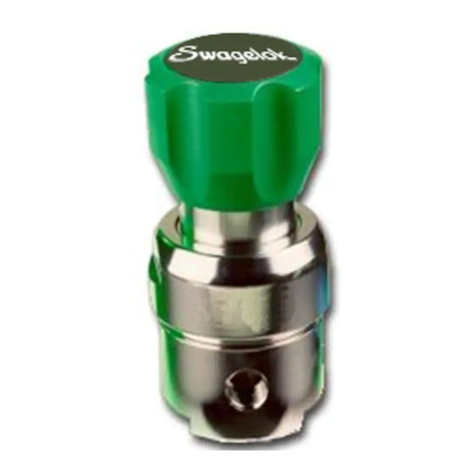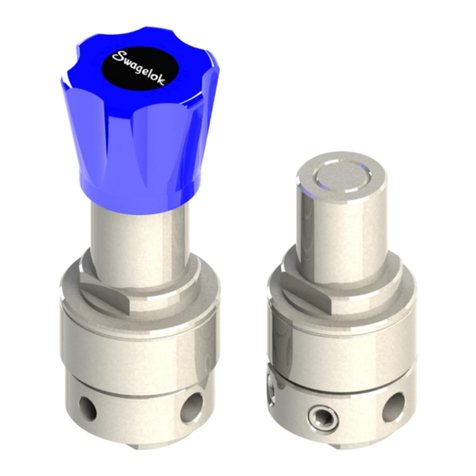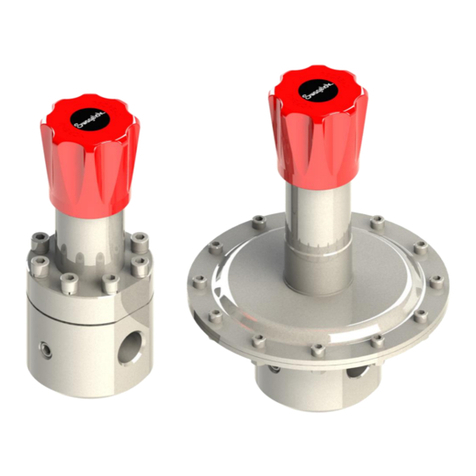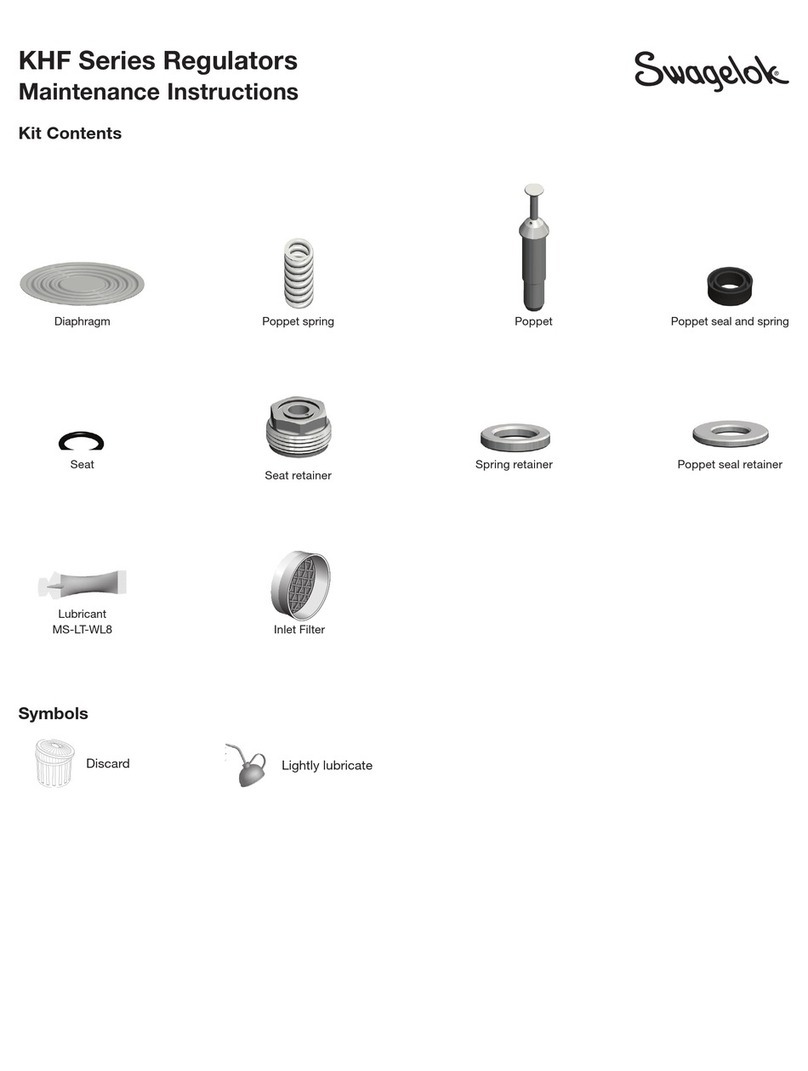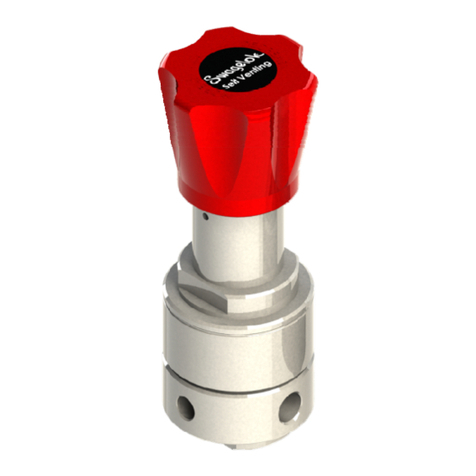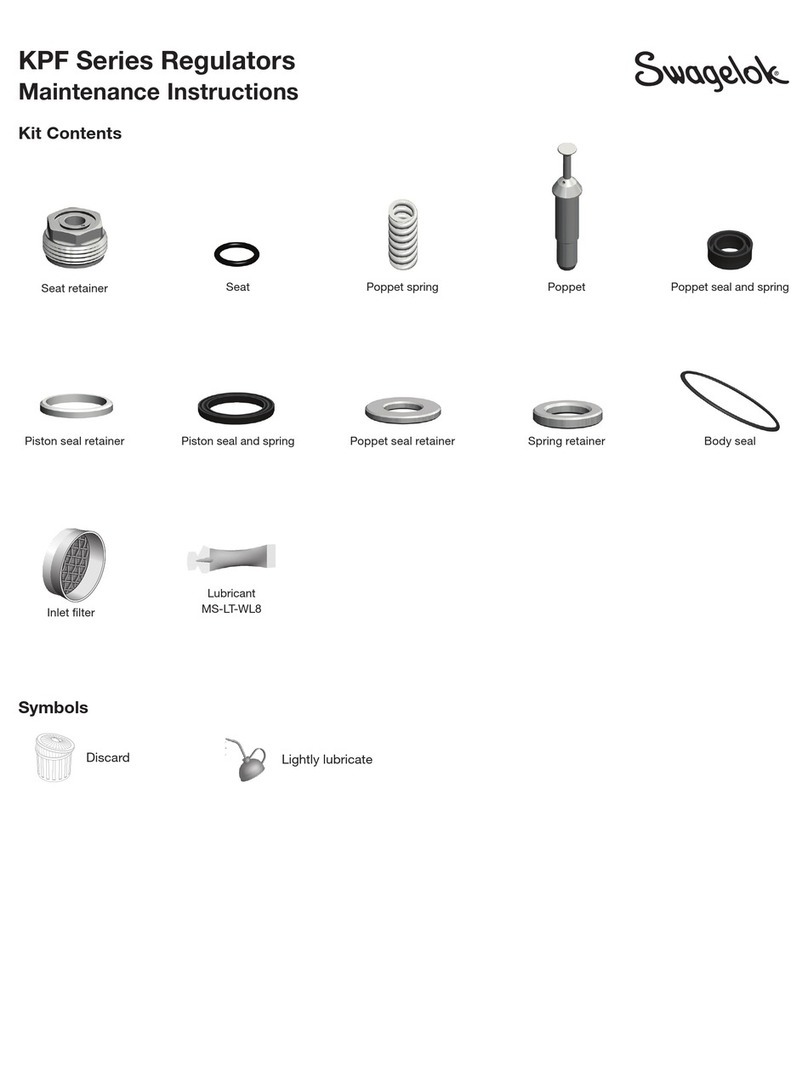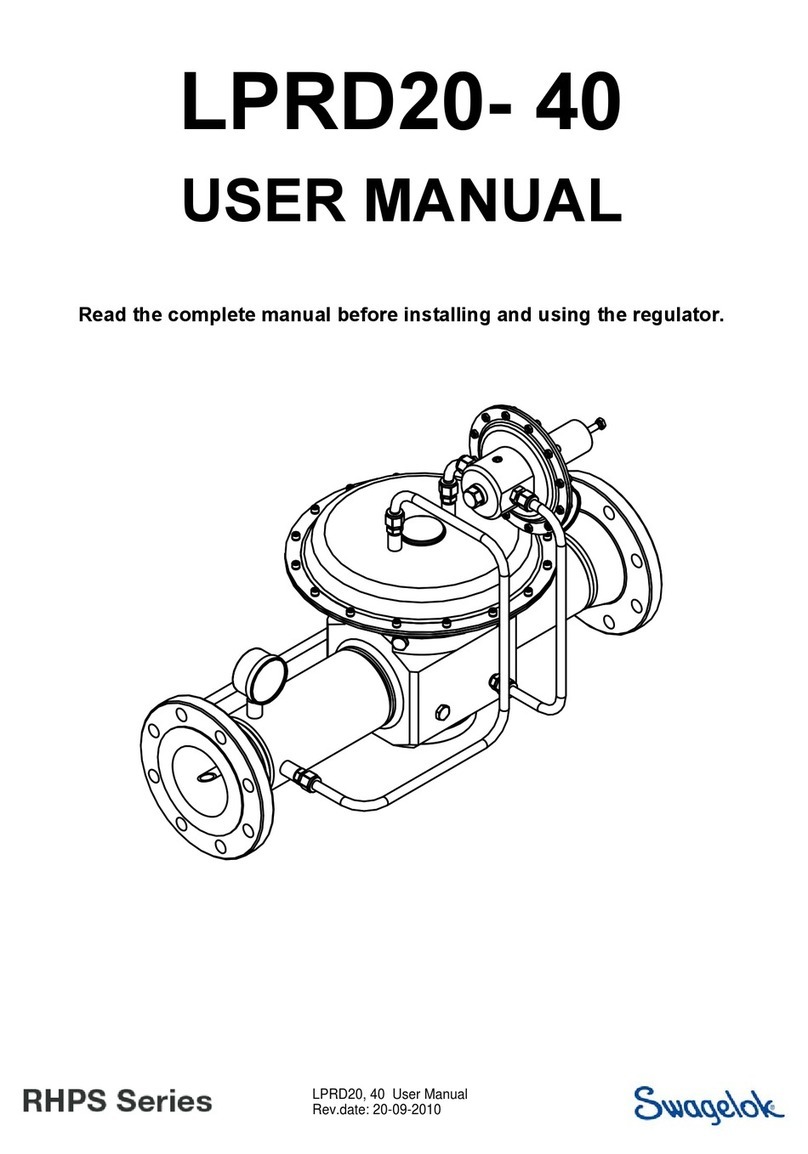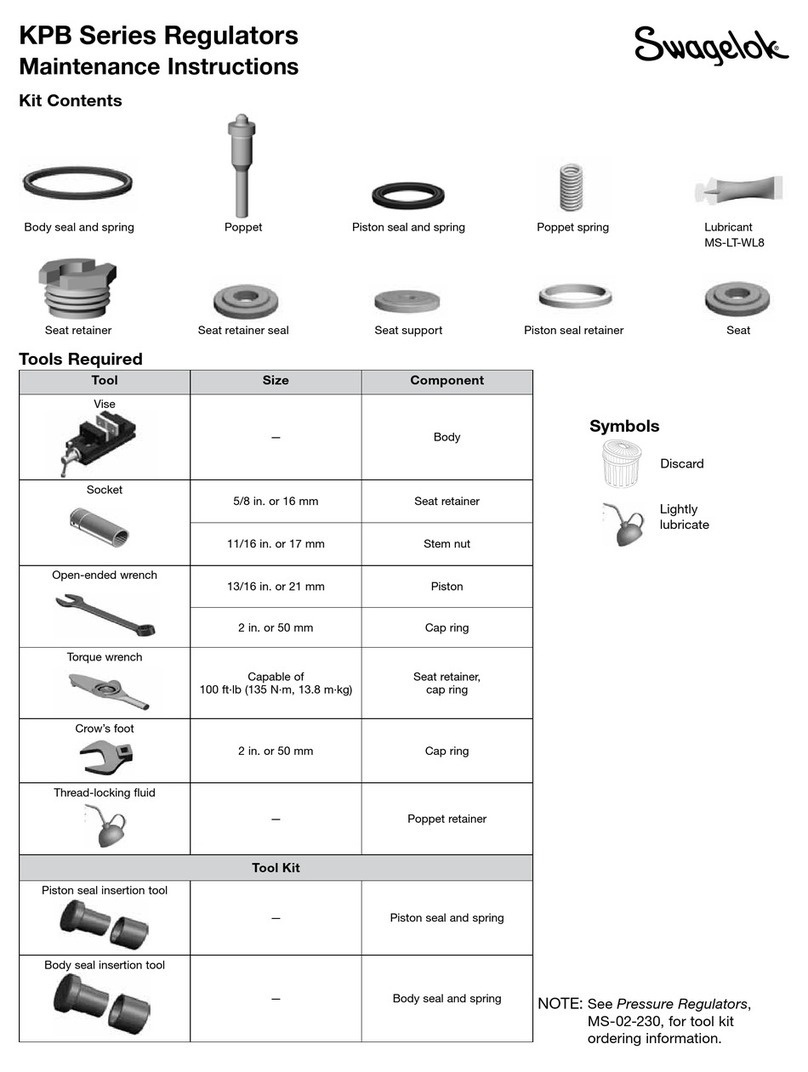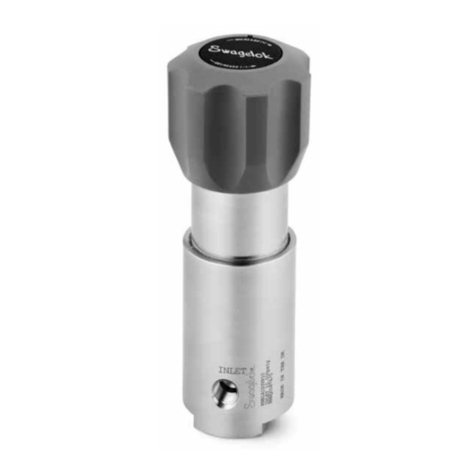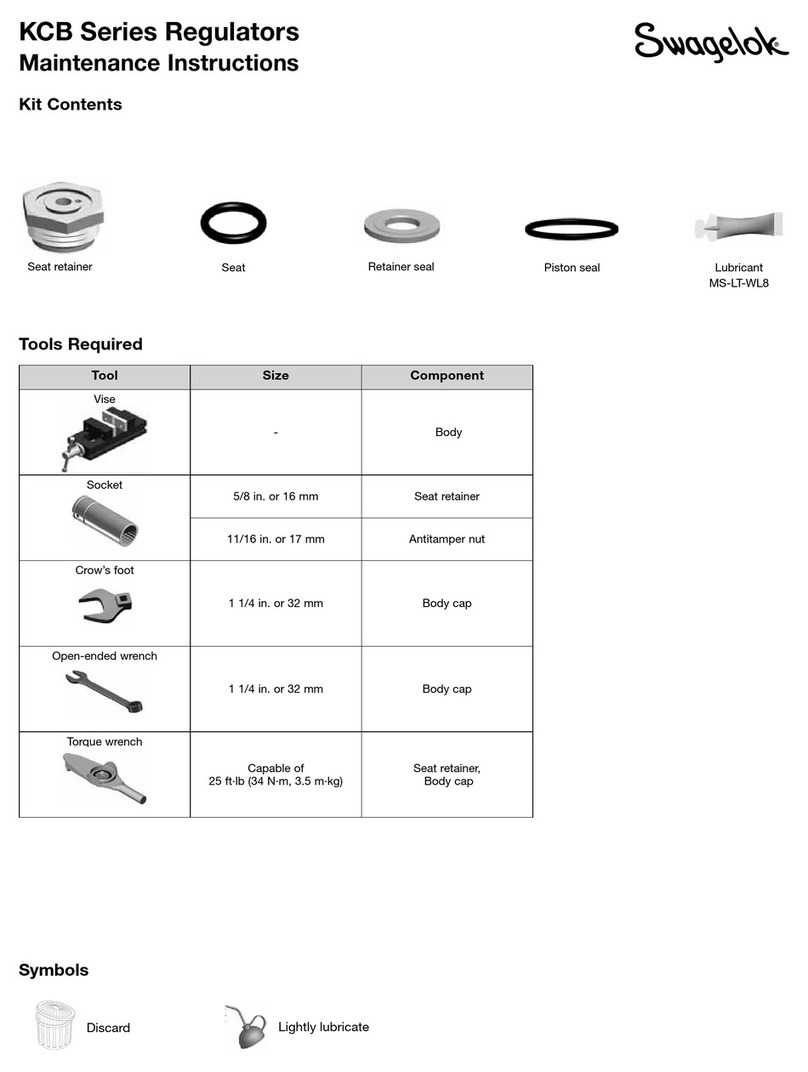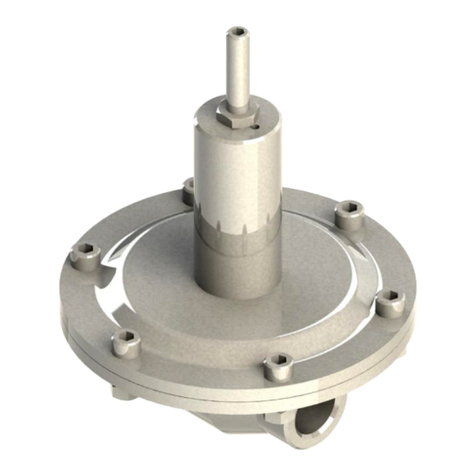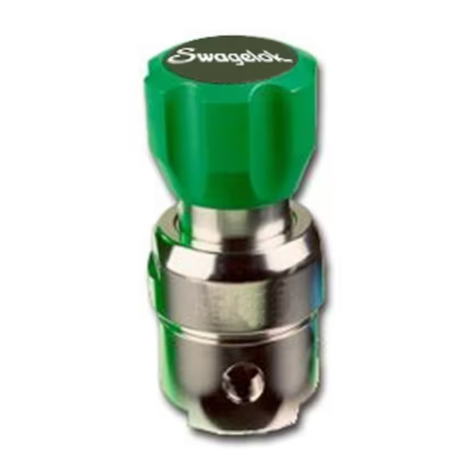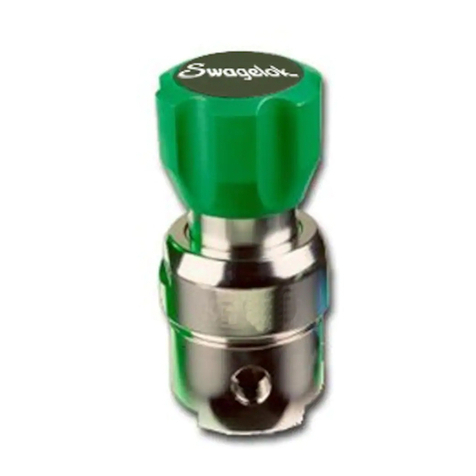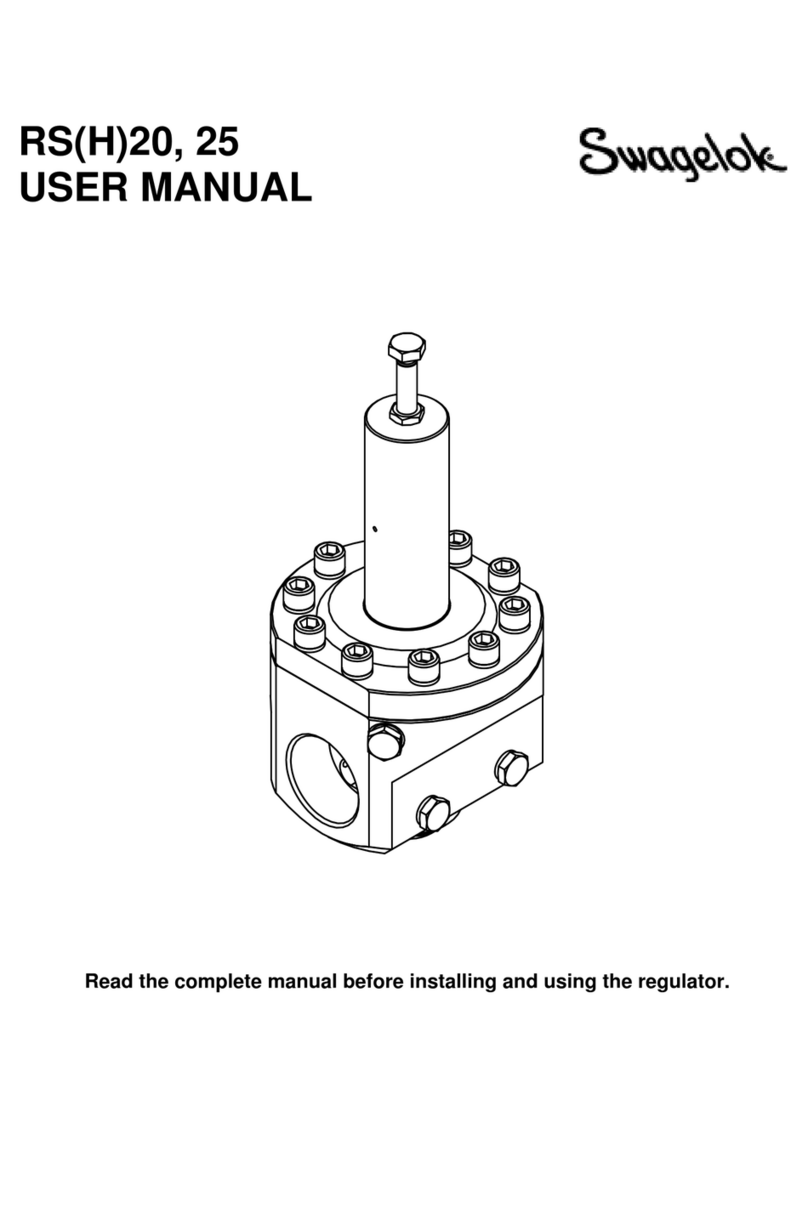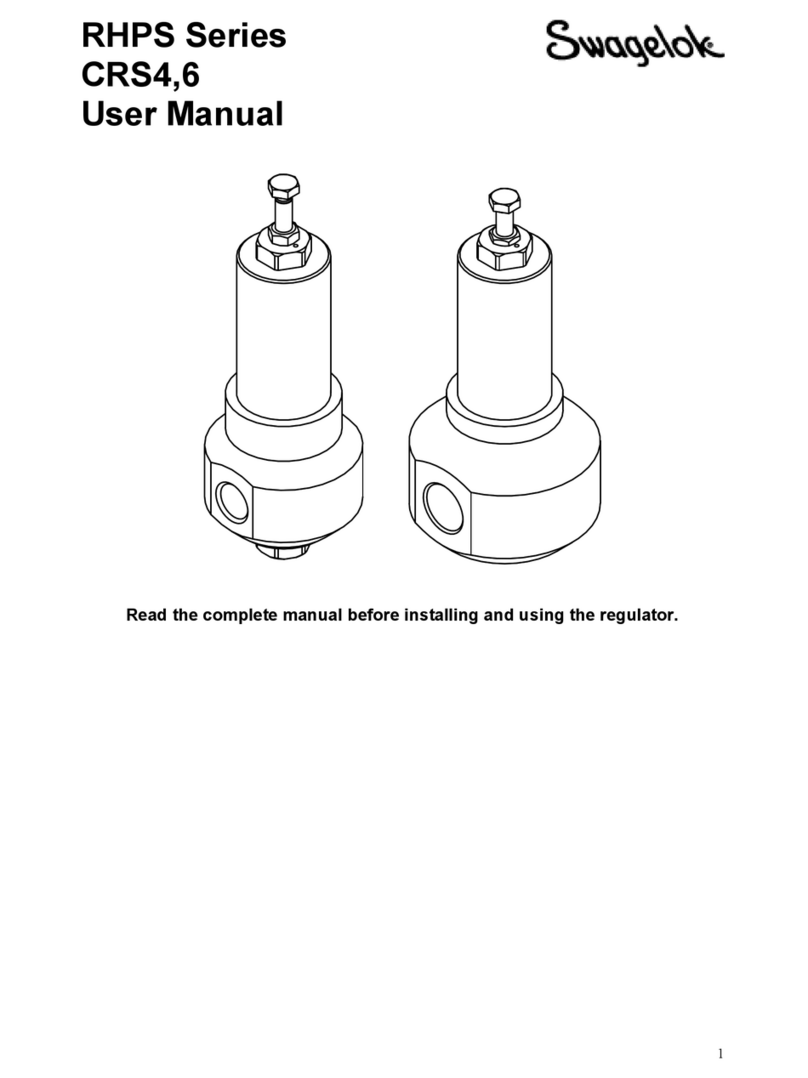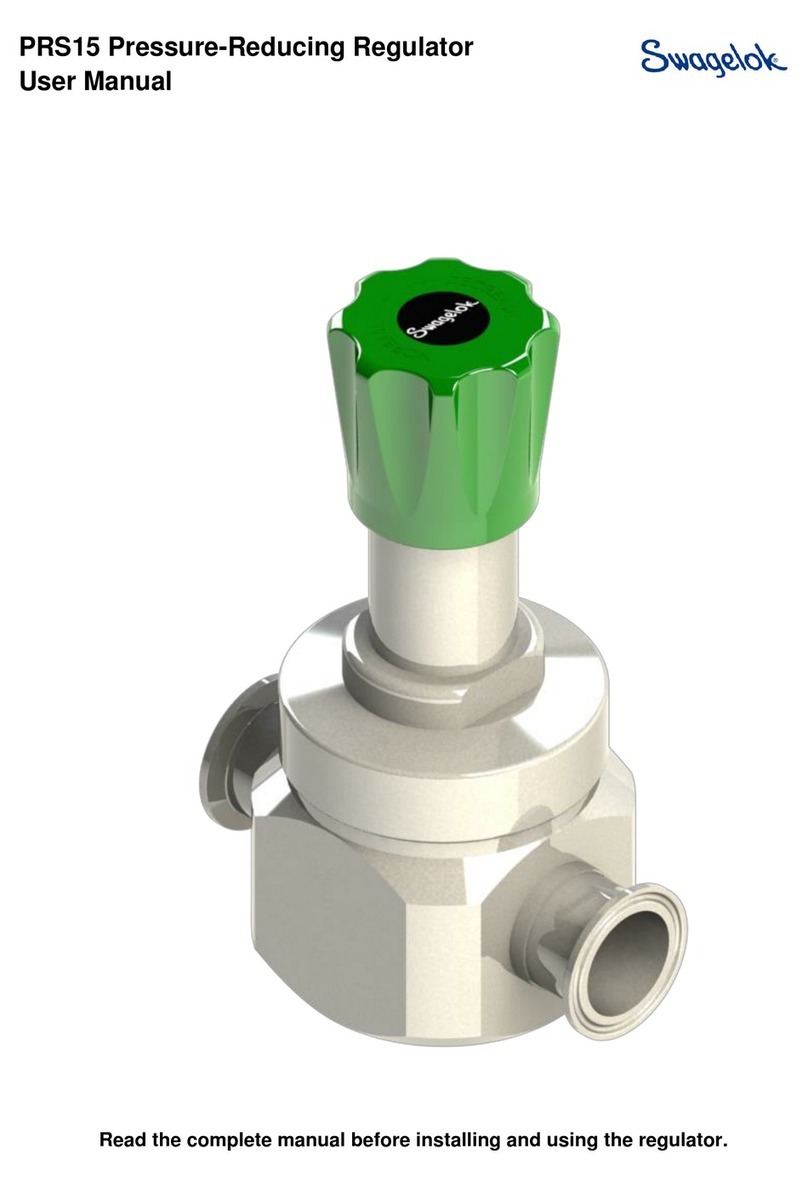3
TBVS8 User Manual
Rev.date: 20-09-2010
2 Installation
2.1 Points of attention before installation
This regulator can be equipped with different options and connections.
Before installing the regulator you, should fully understand the options and the suitability of your particular
regulator and its suitability for the application.
sketch with mounting modes
-The preferred mounting position of the regulator is vertical with the springhousing facing horizontal.
(see above sketch). The reason is the weight of the diaphragm plate, in this position it does not
effect the regulation.
-Avoid sealing compounds which harden, be careful with anaerobic (loctite type) compounds.
Particles of these compounds can run into the regulator and lock moving parts.
-Frequent assembly and disassembly of the in- and outlet fittings can damage the in- and outlet
thread of the regulator. Damaged threads can cause serious injury.
-It may be necessary to remove the regulator from the system during maintenance or service. Make
sure that this is possible.
-The regulator is suitable for gases. Check if the materials on the assembly drawing, which came
with the regulator, are compatible with the used media.
-The product is designed to be used with the ambient temperature between -20 ºC and +80 ºC. The
limits of the medium temperature depend on the used seals.
-The regulator is standard not oxygen clean. Although all regulators are ultrasonically cleaned, this
does not make them suitable for oxygen use.
2.2 Installation instructions
-Verify that the regulator, the connections and its accessories are undamaged.
-Verify that the regulator and its accessories are suitable for the system operating pressure and
have the proper connections.
-Carefully clean all pipes and connections. Any swarf, lint, wire etc. may cause seat leakage.
-Verify the flow direction of the system and mount the regulator accordingly.
-Securely make the appropriate connections to the regulator in accordance with the procedures
recommended by the manufacturer of the connections.
-Verify that the regulator is mounted in the system without stress on the connections.
Stress on the connections can result in faulty connections and dangerous situations.
-Make sure the maximum inlet-and outletpressure cannot exceed 6 bar.
-Shut-off valves should be mounted in the system for service or maintenance.
-If earthing is required, connect an earth wire under a springhousing bolt.
WARNING
A BACK-PRESSURE IS NOT A SAFETY
